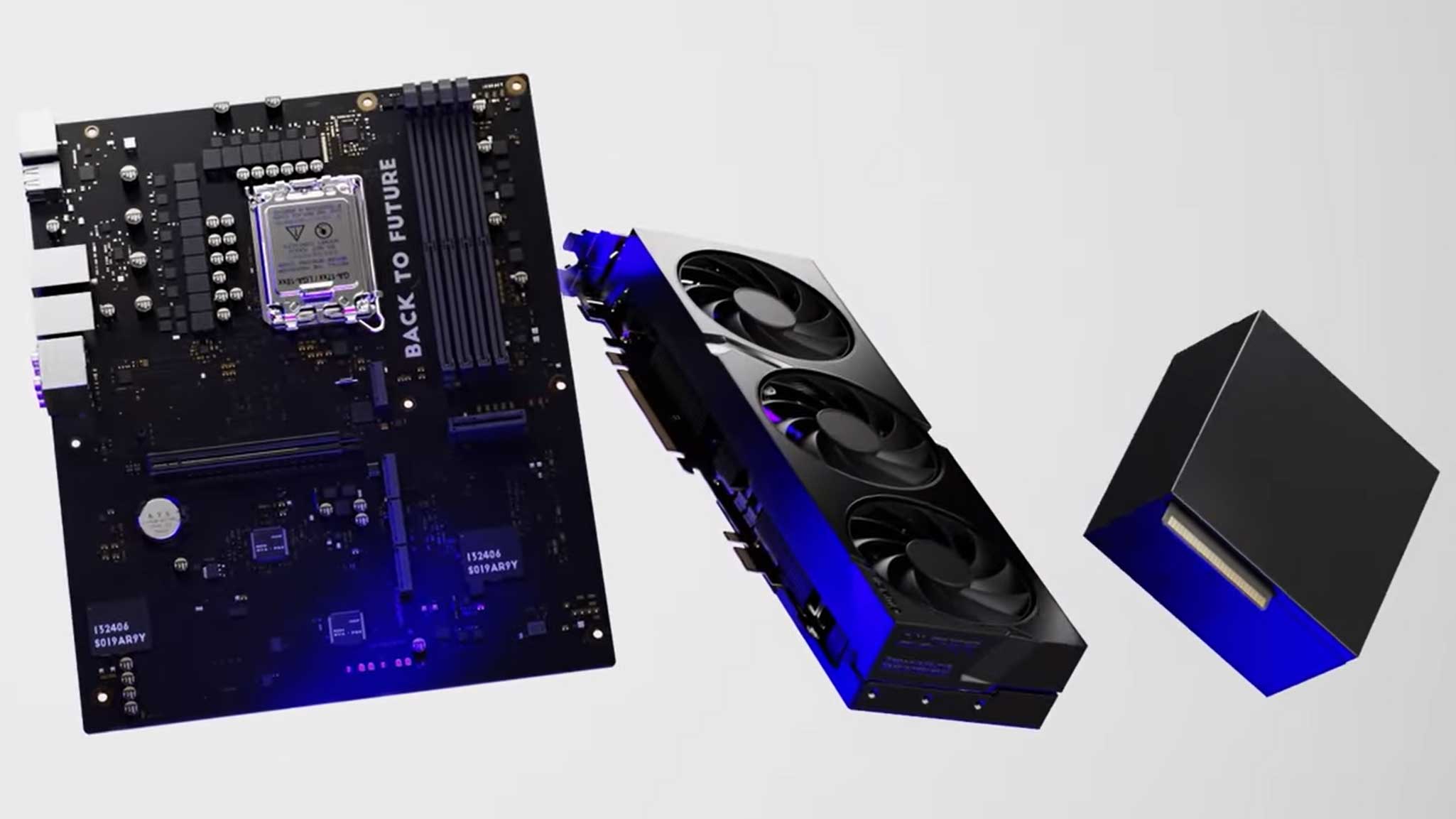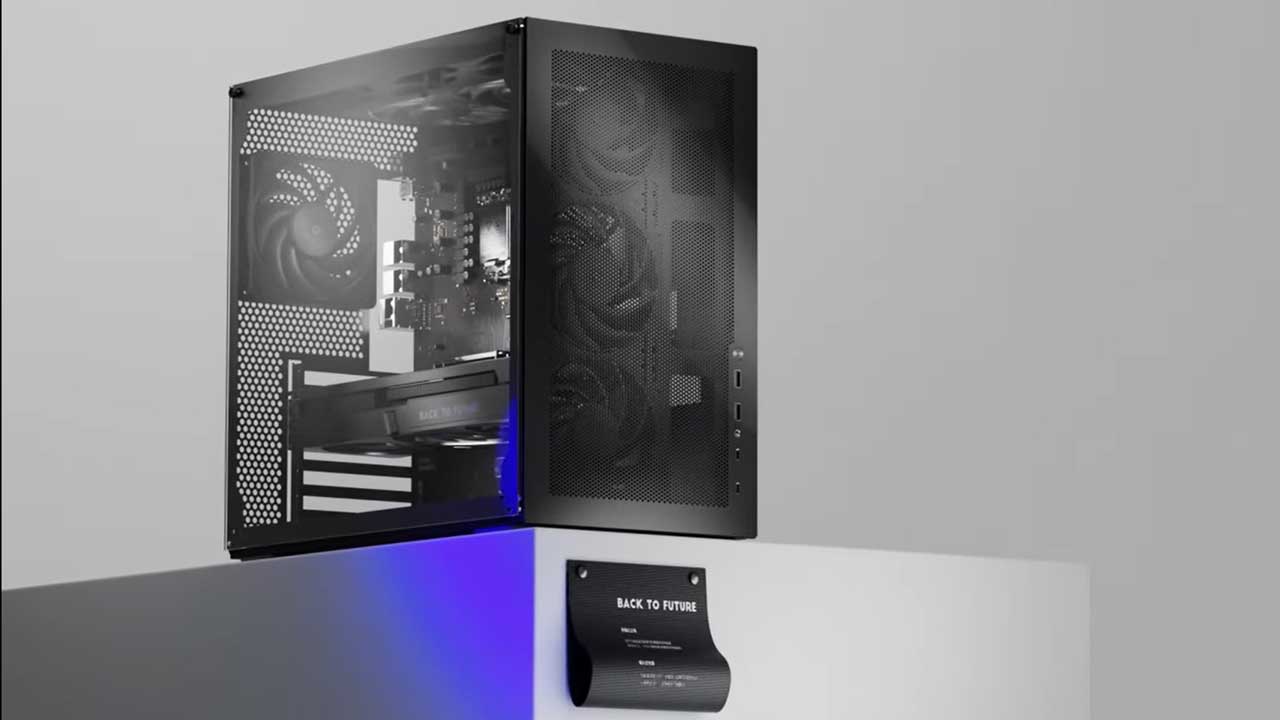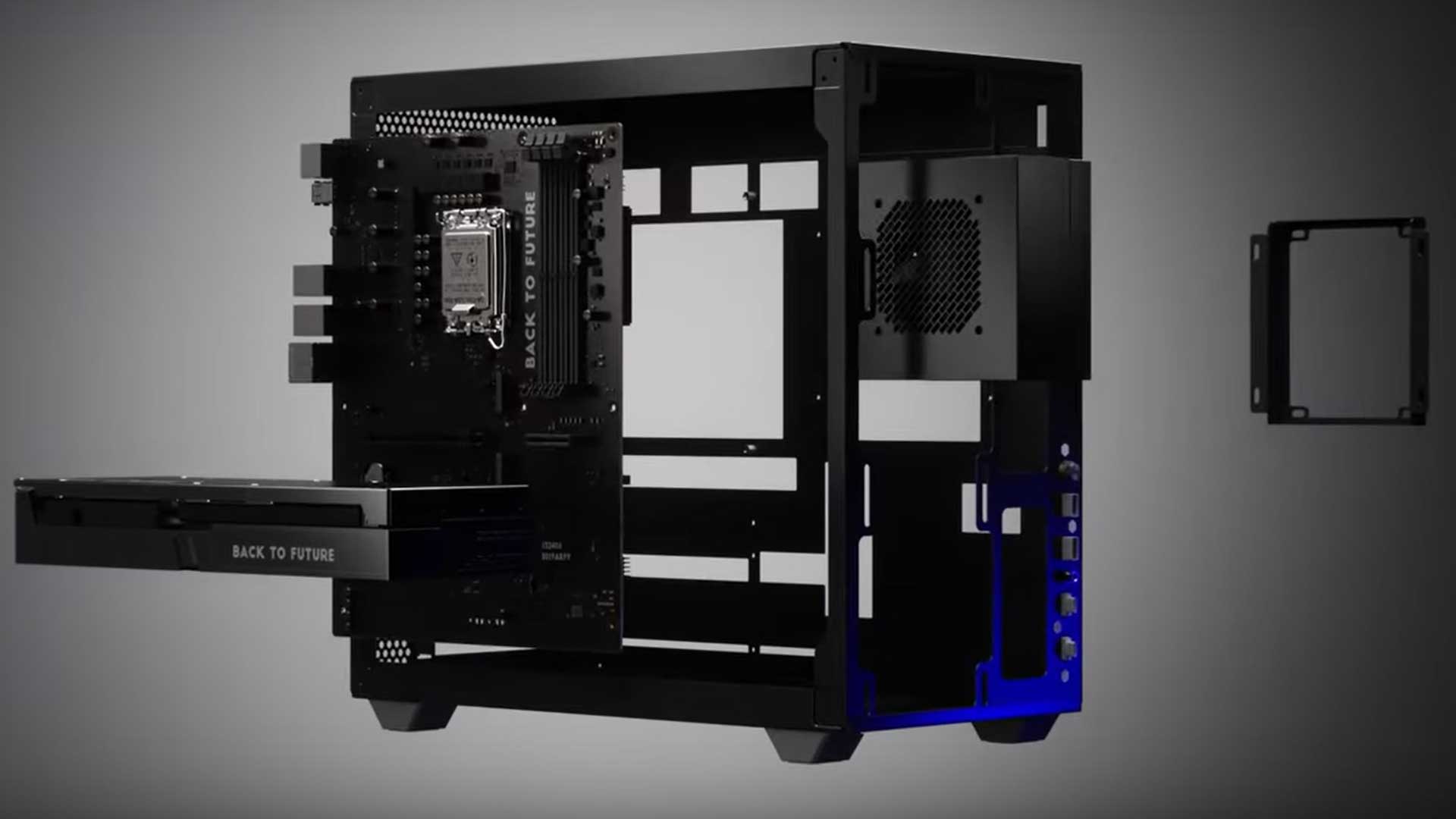Power wire-less motherboards pump 1,500W over 50-pin connector — BTF3.0 standard envisions zero cables between the motherboard, GPU, and power supply

DIY-APE has reached an important milestone in developing the back-plug ecosystem for PC DIYers. BTF3.0 (via Uniko's Hardware) is designed so that no cabling is needed between your PSU, motherboard, or graphics card, reducing cable management for supremely clean builds. The DIY-APE team shared some information and video footage of the various new components working together and separately on Chinese social media.
As a gentle reminder, DIY-APE’s BTF designs have previously been adopted by important PC component makers like Asus and MSI. BTF designs seek to reduce cable clutter by putting connectors around the back and favoring direct cable-less connections between components. We’ve seen some great examples of previous BTF builds at trade shows, but it is taking time to penetrate the market. Hopefully, with some upcoming generation of new processors/platforms, BTF will become mainstream.
Now that BTF3.0 has been finalized, what does it promise? The new BTF3.0 motherboard has an up to 1,500W 50-pin header, which replaces the traditional or dual-8-pin EPS connectors for the CPU and the 24-pin connector for motherboard power.



To match the motherboard, which was a prototype Z890 chipset model from Colorful, the DIY-APE team had an Asus graphics card like the TX Gaming RTX 4070 12G-BTF, with the firm’s neat GC-HPWR connector. The (up to) 1,500W from the motherboard will be fed through this connector (and the PCIe slot) to the GPU, which sounds ample. It also would put an end to GPU power cable melting woes.
Another essential component of this milestone setup is the PSU. However, we don’t know what vendor this component was. In the embedded video, towards the end, you will hear it satisfyingly clunk into place to power the mobo and GPU. It's a shame they couldn't get one to match the motherboard and GPU, but that's nitpicking.
With these three major components and equipping M.2 rather than SATA SSDs (there are four M.2 slots on the sample Mini ATX board pictured), all a PC DIYer should need to wire up are the CPU cooler, system fans, RGB cabling, and front panel connectors.
congrats to diyape!btf3.0 is finalised, no cables between psu and mobo and gpu.it needs whole new types of psu and mobo and case that comply with btf3.0.all connectors on mobos are at the back of the pcb.12vo mobo confirmed, with a new header that has 50pin to replace the… https://t.co/ZhWRzaatBs pic.twitter.com/Hp0iM0hNQNJanuary 2, 2025
Lastly, the DIY-APE folks and Uniko shared some information about cases. Different case makers use different mobo tray thicknesses and cutouts, which can impact how things connect, and requiresome design/build workarounds. In other words, cases and component makers must follow more rigorous standards before BTF3.0 or a similar standard becomes a mass-market standard.
Get Tom's Hardware's best news and in-depth reviews, straight to your inbox.
We look forward to the clean BTF future but wouldn’t like to bet on when BTF PC DIY becomes mainstream.

Mark Tyson is a news editor at Tom's Hardware. He enjoys covering the full breadth of PC tech; from business and semiconductor design to products approaching the edge of reason.
-
das_stig So what do we need to go cable free?Reply
1. Dual CPU fan header and chassis fans that provide wireless power/data.
2. Universal short range but hi-speed wireless to replace USB.
3. Universal GPUs socket or MXM designs dual fan headers that provide wireless power/data.
Any other ideas? -
80251 A wireless chassis fan is a nice idea but the EMF strength required to power it wouldn't be.Reply -
thestryker You'd have thought Intel murdered peoples loved ones when they rolled out ATX 12VO so this is unlikely to ever happen. Also if people think motherboards are expensive now just wait as this would probably murder budget boards. I don't necessarily mind a shift like this, but it absolutely has to be industry wide or it's a waste.Reply -
ekio WOW, I love it :love:Reply
This is plain and simple totally superior to the quite dated JEDEC standards...
PS: why don't you make the GPU power connector even larger with wider connectors, just in case, to prevent any potential risk. They still look small compared to what a 4090/5090 will eat for dinner. 12VHPWR connectors made the mistake, trying to be small to power 30cm long gpus... we saw the result... Connectors do not need to be small at all, they only need to be reliable.
I would go even further, by replacing all the fan/pumps classic pins from the last century by USB type-C ports, so you can have power/monitoring/firmware update all-in one universal cable!
And I would remove the SATA support, because it's too dated, you could make a SATA power/data interface outside the motherboard that plugs through USB-C instead, since these drives will only be used for storage anyway. That would clean/simplify the design of the motherboard even further.
I hope this is not just a trend and that it becomes a new standard. -
P.Amini The footprint of this case is much bigger/wider without much benefit to justify that big footprint. No, thanks.Reply -
Sippincider So when we have the next round of high-end graphics cards burning out power connectors, it'll take your motherboard along with it?Reply -
80251 Reply
How many amps of +12V power can a USB port provide? You have to remember that larger fans, when they spin up, draw much more power than when they're already spinning.ekio said:
I would go even further, by replacing all the fan/pumps classic pins from the last century by USB type-C ports, so you can have power/monitoring/firmware update all-in one universal cable!
And I would remove the SATA support, because it's too dated, you could make a SATA power/data interface outside the motherboard that plugs through USB-C instead, since these drives will only be used for storage anyway. That would clean/simplify the design of the motherboard even further.
I hope this is not just a trend and that it becomes a new standard.
While SATA3 might not have the bandwidth over the latest iterations of USB, I believe the latency is superior. -
JTWrenn I really hope the connector on the back of the case is not fully hard wired. What I mean is if that thing doesn't have flex, it's gonna suck to get everything in the system. Really the idea of wireless for a case should actually just be placement of cables in the case, and really short cable plugs that are all sideways not sticking up. Fully hard lining it...ie there is a port on the back of the case on the inside you have to connect your mobo to, then screw it in to all the right mounts, sounds tedious as hell, and a cable you plug in before mount sounds better to me.Reply
All in all good ideas that should be adopted in some form to future systems. Especially the PCI e power increases. Running extra power direct to the card the way it was done was always just a work around. Hope that makes it in very fast. -
JTWrenn Reply
5 amps at 20v. If a single case fan is pulling 100w that is just not right. Noctua 140mm's pull about .12A at 5v. That is definitely not an issue. Not sure USB c really is the best option because of over complexity but I can't see how it would ever get run over on power usage these fans are pretty mild power wise. You would need a ceiling fan level to outdo max usb c power especially on a very short cable.80251 said:How many amps of +12V power can a USB port provide? You have to remember that larger fans, when they spin up, draw much more power than when they're already spinning.
While SATA3 might not have the bandwidth over the latest iterations of USB, I believe the latency is superior.